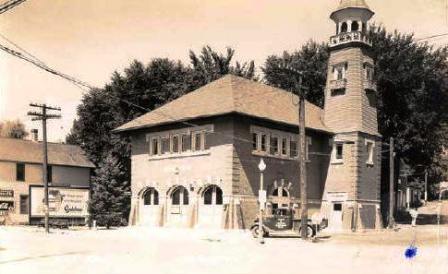The Village of Algonquin, IL
Welcome to the website for the Village of Algonquin!
History of Algonquin
The Village of Algonquin was settled in 1834 and incorporated in 1890, and sits in both Kane and McHenry Counties. Located approximately 47 miles northwest of the Chicago Loop, the Village has seen significant growth over the last decade. Throughout development and growth of the community, the Village aims to maintain its friendly and community-oriented atmosphere.
A portion of the information provided below was excerpted from "History of Algonquin (1834-1994)," prepared by the Algonquin Historic Commission as an addendum to the comprehensive plan of the Village of Algonquin. For more information about Algonquin's history, contact the Algonquin Historic Commission at historiccommission@algonquin.org or attend one of their meetings.
An Overview of Algonquin's History
Native American belonging to the Potawatomi originally inhabited the Algonquin area. In 1834, the first settler, Samuel Gillilan, arrived in this area from Virginia. Fellow settlers Dr. Cornish, Dr. Plumleigh, Eli Henderson, Alex Dawson, and William Jackson soon followed.
|
Often referred to as the "Gem of the Fox River Valley," Algonquin is nestled in the foothills of the Fox River Valley. In its early years, residents of the village had difficulty finding a name. Denny's Ferry, Cornish Ferry, Cornishville, and Osceola were all considered. Finally, the community leaders met and selected the name "Algonquin" on the suggestion of Mr. Samuel Edwards from the name of a ship he once owned. The name Algonquin became official on December 23, 1847. |
 |
|
The town saw some new growth with the construction of the railroad in 1855, which provided another means for farmers and producers of dairy goods to transport their products to Chicago markets. On February 25, 1890, Algonquin residents voted to incorporate as a Village. Along with its commercial trade, the town also became a popular summer vacation spot for Chicago residents. Read more about the introduction of the railroad and Borden Milk Factory. |
 |
|
A Village Hall was erected in downtown Algonquin (2 S. Main Street) in 1906, and was constructed by Blair and Summer of Janesville, WI for $6,848. The structure, which was completed on January 31, 1907, initially housed the sprinkling wagon and fire department, the jail, council chambers, clerk's office, and a vault for records. This building served municipal officials in various capacities (including a library, school, and municipal offices) until they moved to the current Village Hall, located at 2200 Harnish Drive, in 1996. Historic Village Hall now serves as a community facility and meeting center. Read more about Algonquin's administrative municipal centers. |
 |
A highlight in Algonquin's diverse history is the period from 1906 to 1913, when the Algonquin Hill Climbs took place. In those days, if an automobile could successfully climb the hills of Algonquin, that machine immediately met with the stamp of public approval. The event had national participation, and the "Algonquin Cup" was a very prestigious and coveted award. The two hills used were Phillips Hill (Route 31 to the cemetery), and Perry Hill (south of town, now Lundstrom Lane). When use of Perry Hill was discontinued, the Village built a new road for the climbs in the vicinity of what is now known as Huntington Drive Hill. A new park, christened "Hill Climb Park," located at Circle Drive and Huntington Drive, opened in 2004. This park offers recreational opportunities and includes interpretive signage and other features in recognition of Algonquin's historic hill climbs.
|
On June 8, 1935, a large celebration was held to honor the Village's 100th birthday. The theme of the event was "Algonquin the Beautiful," which included a song written by school teacher Anne Eldredge sung by many who attended the event. A large parade also took place with authentic wagons and vehicles, followed by a dance in the park accompanied by a full orchestra. Read more about the commemoration of Algonquin's 100th birthday. |
 |
Landmarks Leaving a Legacy
The Village of Algonquin has a number of structures and sites that have contributed to the growth and success of the Village over time. These include buildings built by significant figures in the Village's history and sites displaying cultural significance as well. Learn more about some of these sites in Algonquin from the list below:
Old Town Walking Tour
The Old Town District, designated to recognize its historic, architectural, and aesthetic significance of the downtown area, consists of over 300 structures and sites, nearly 40 which are highlighted using the map below. Learn about the people and places that established this area as a uniquely different part of our community, steeped in history and diverse architectural styles.
Associated Documents
- Historic Information
- Significant Sites & Structures
